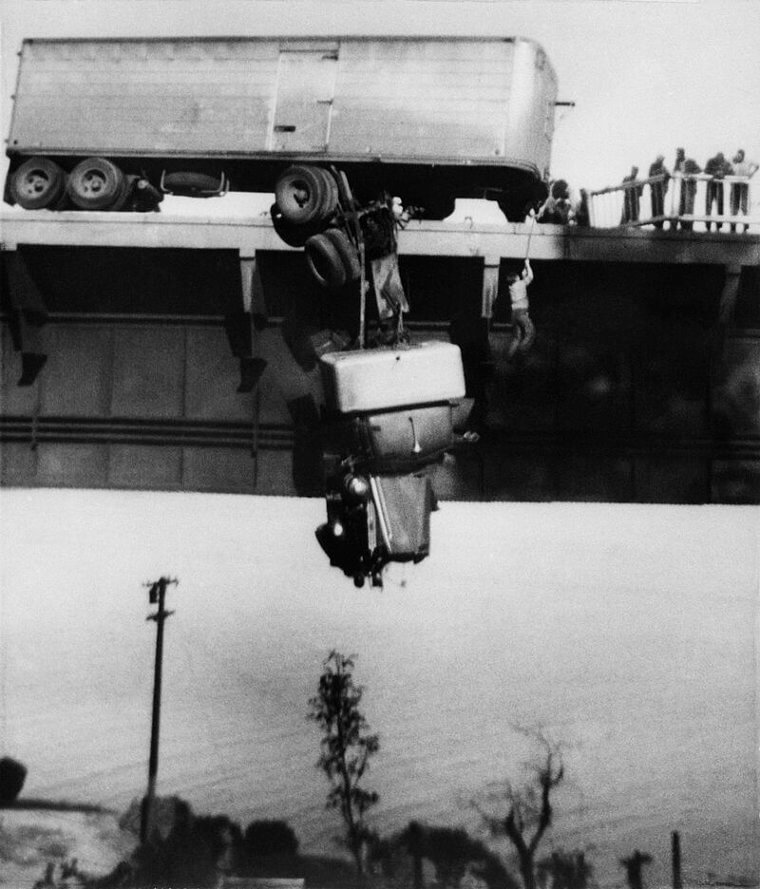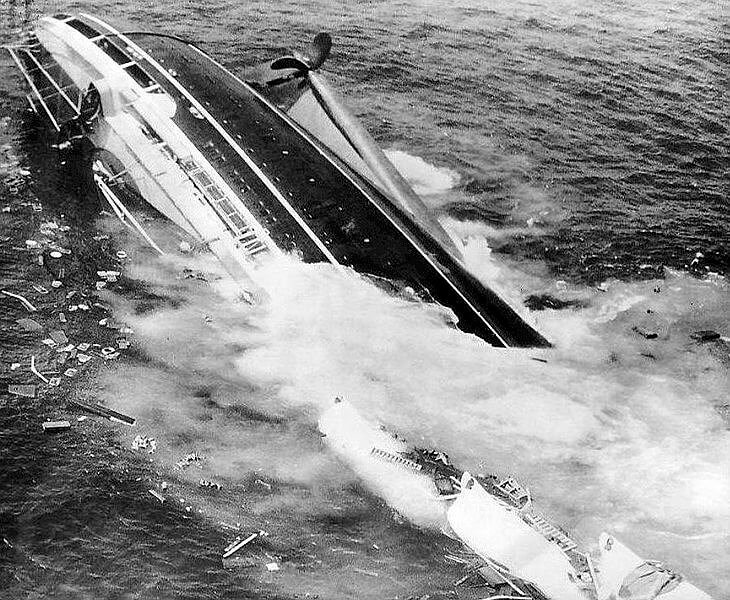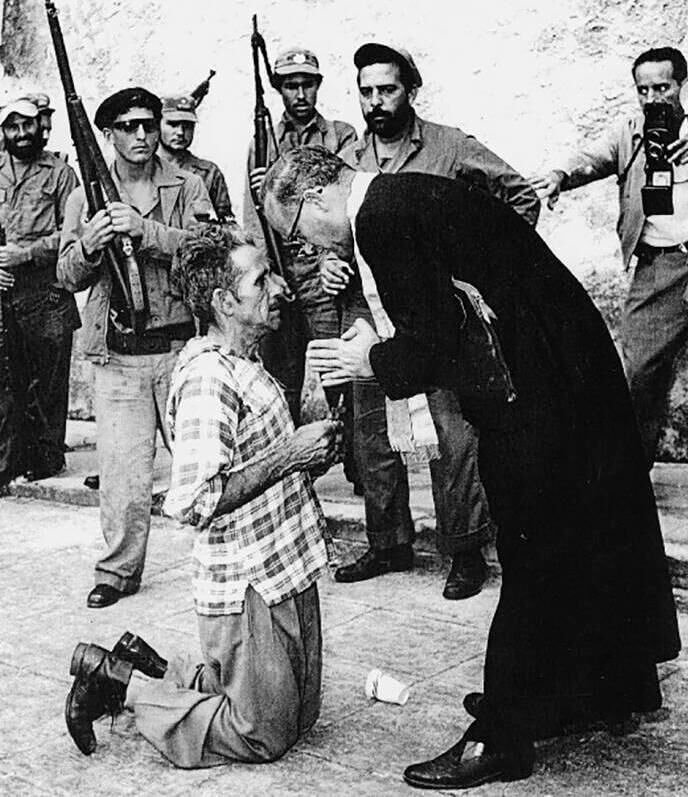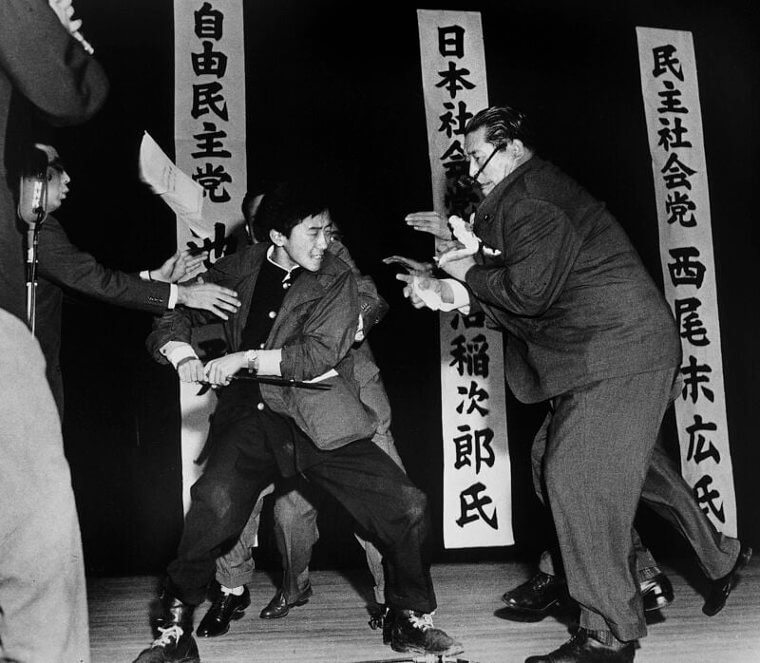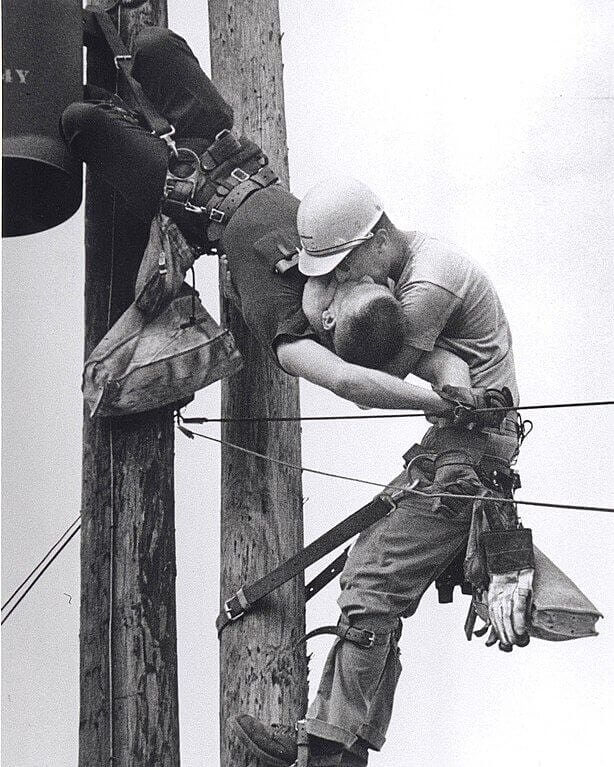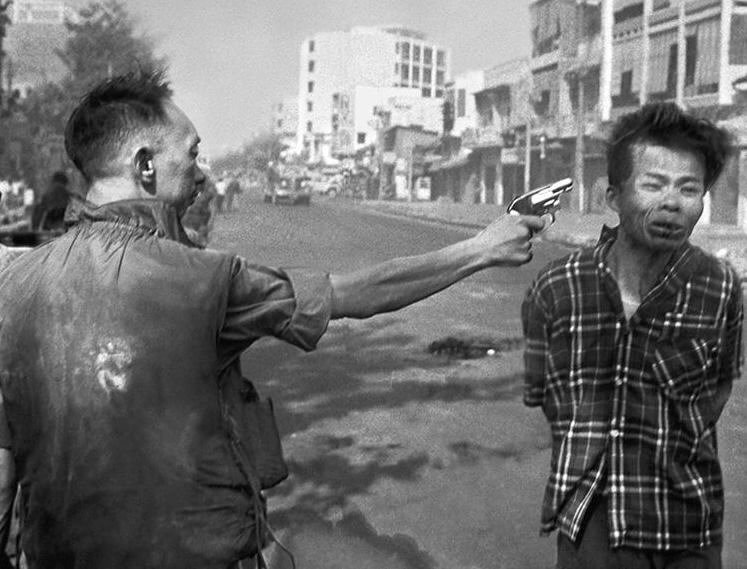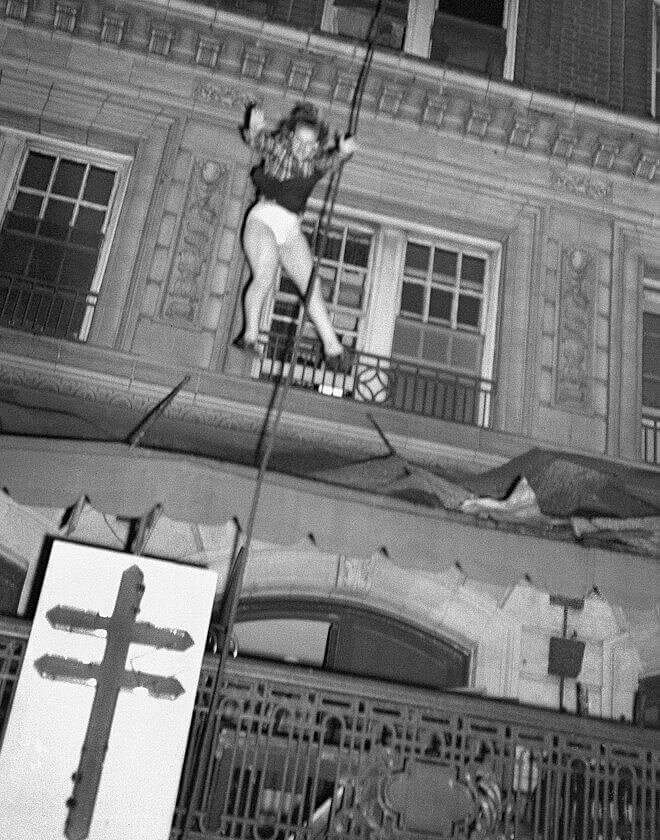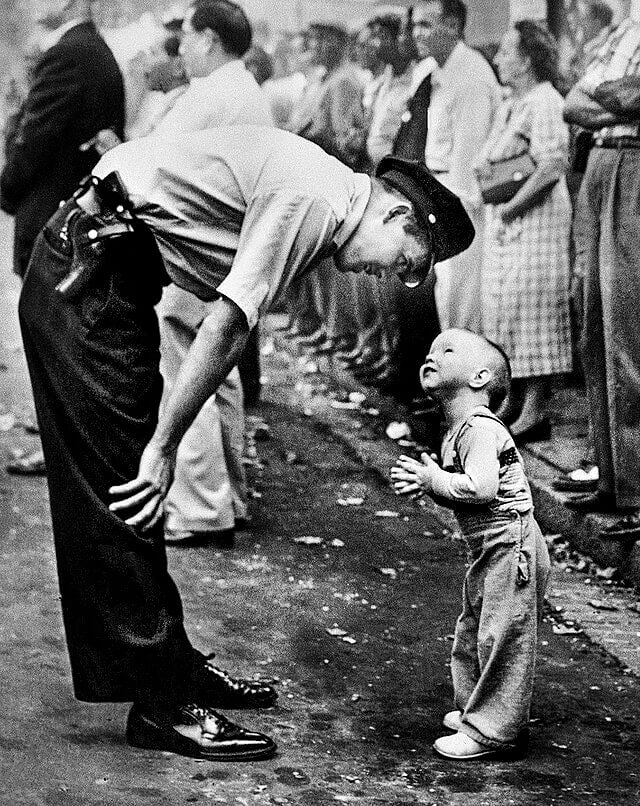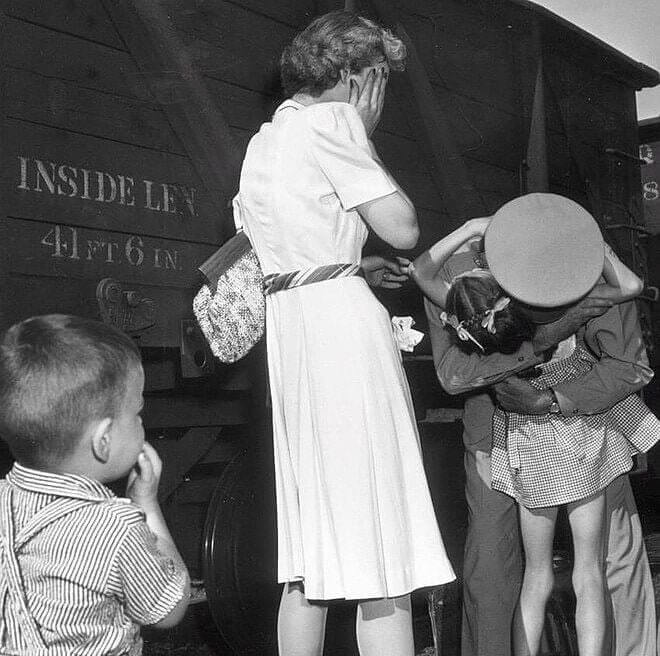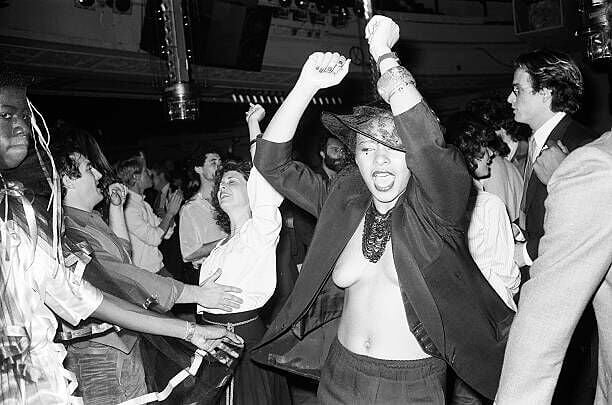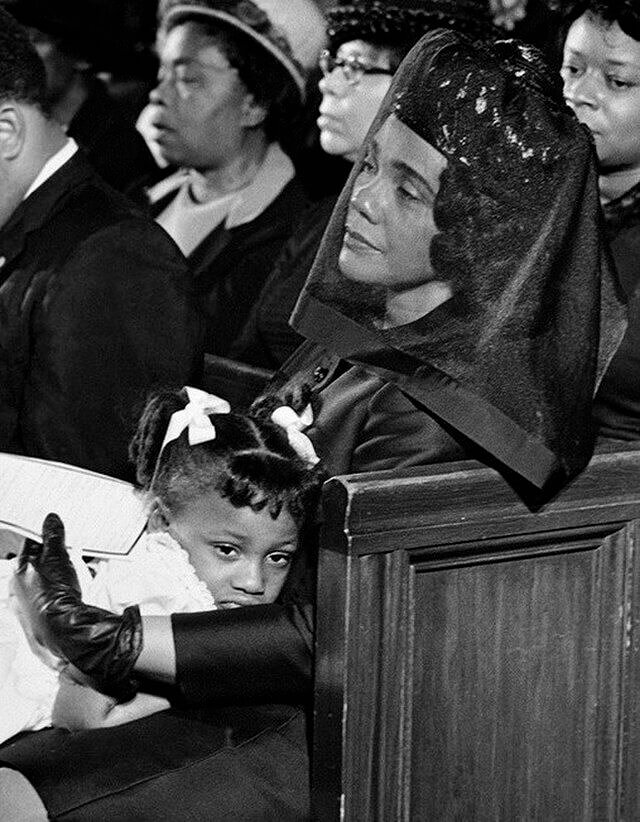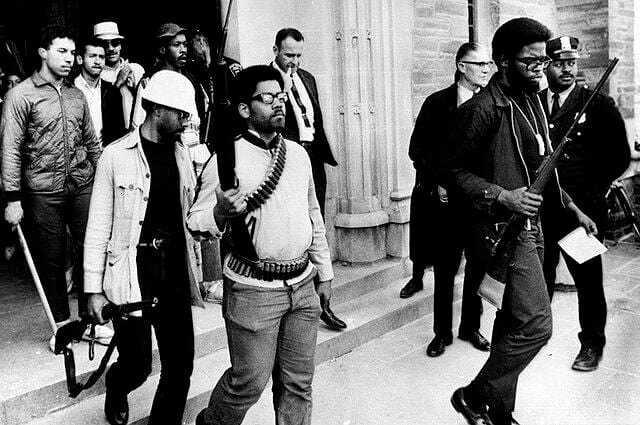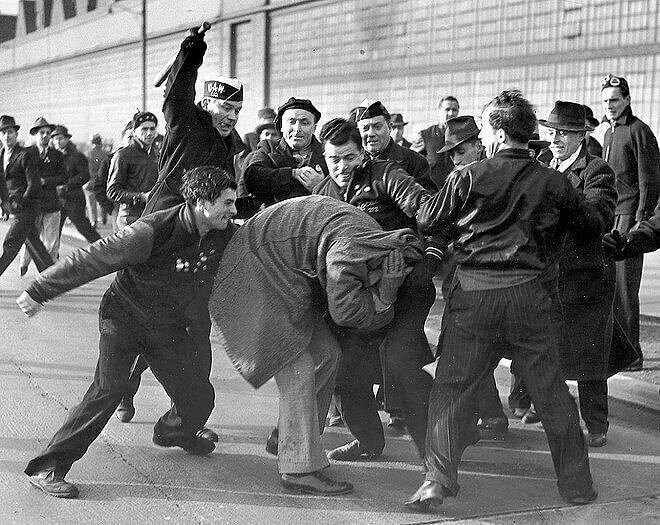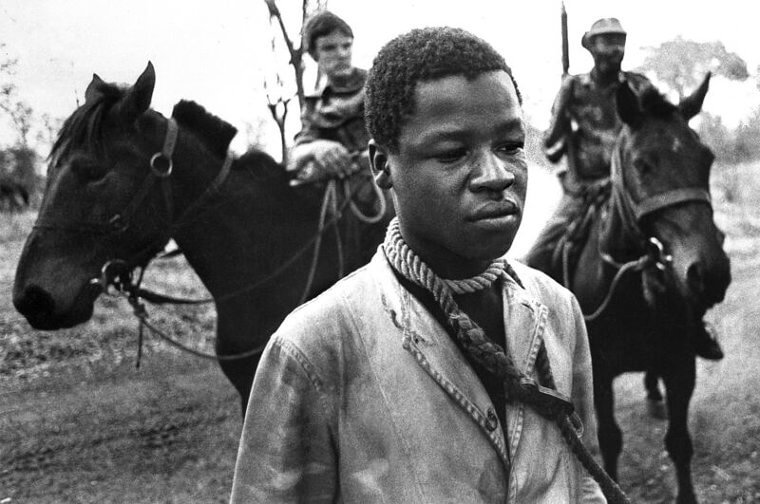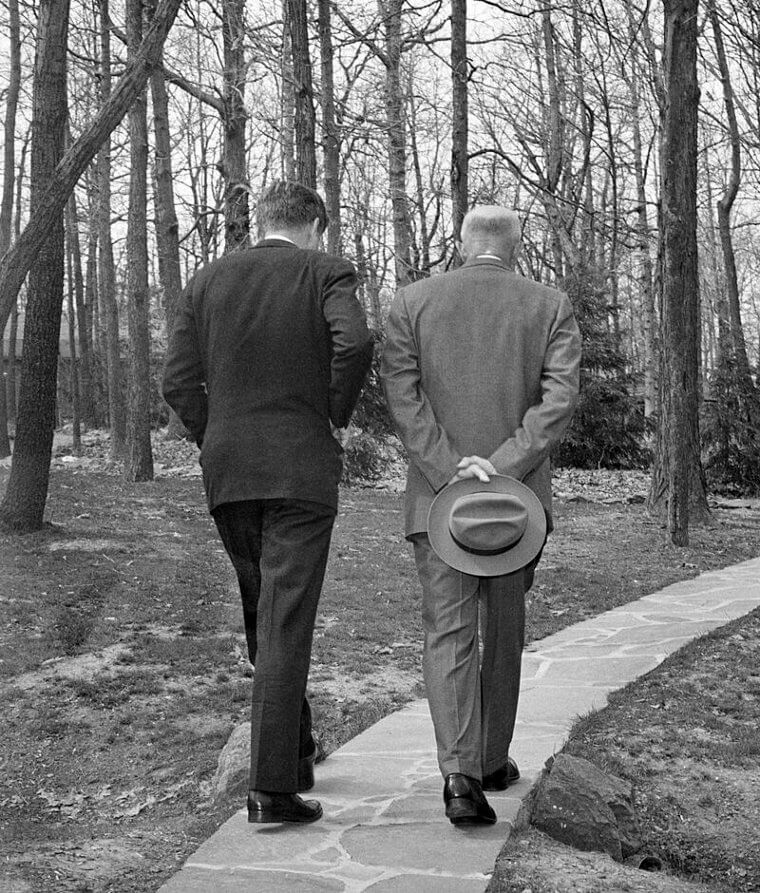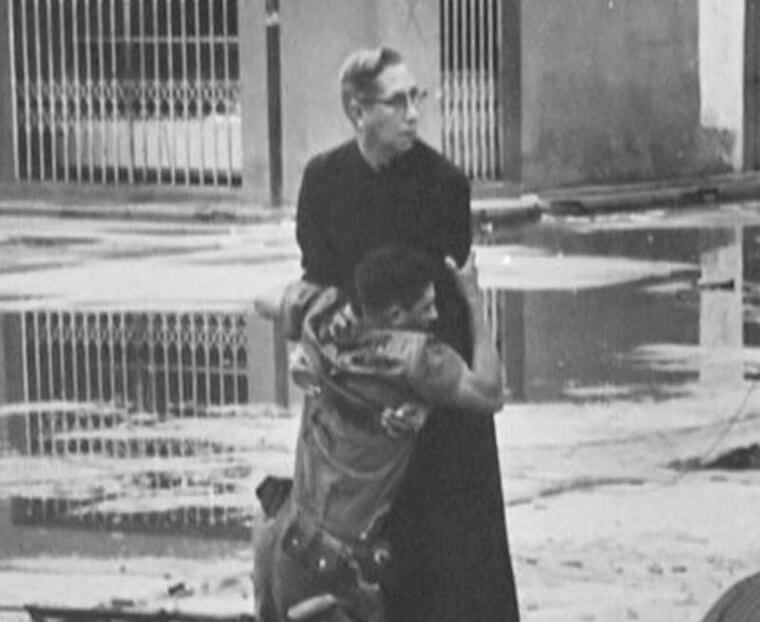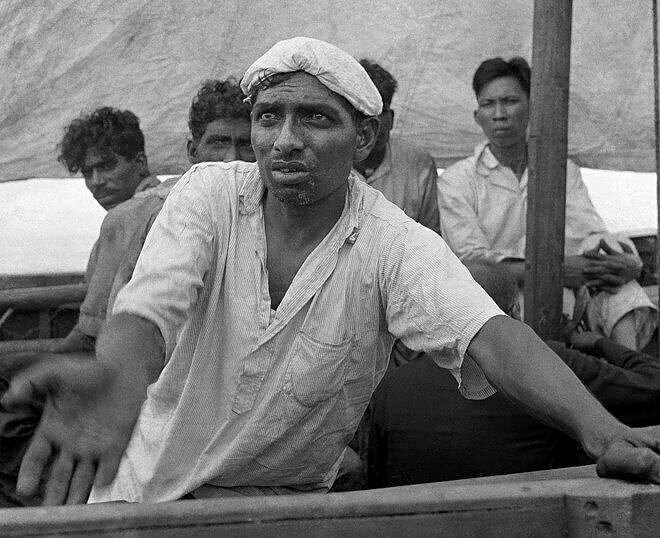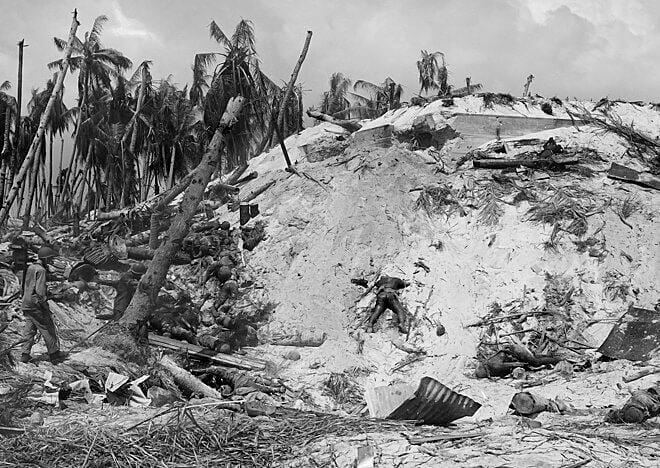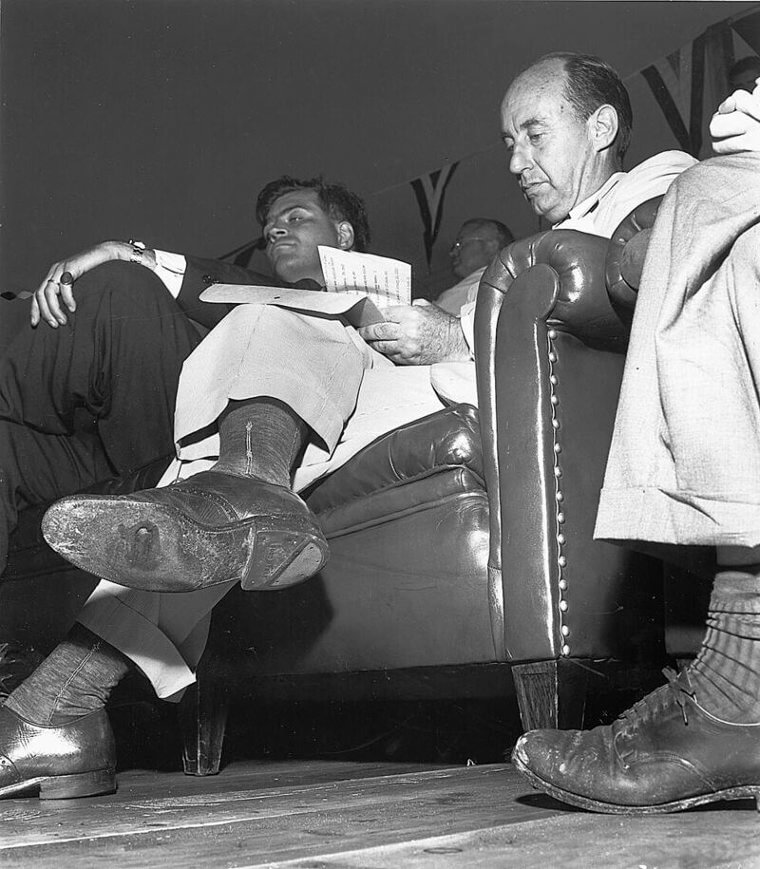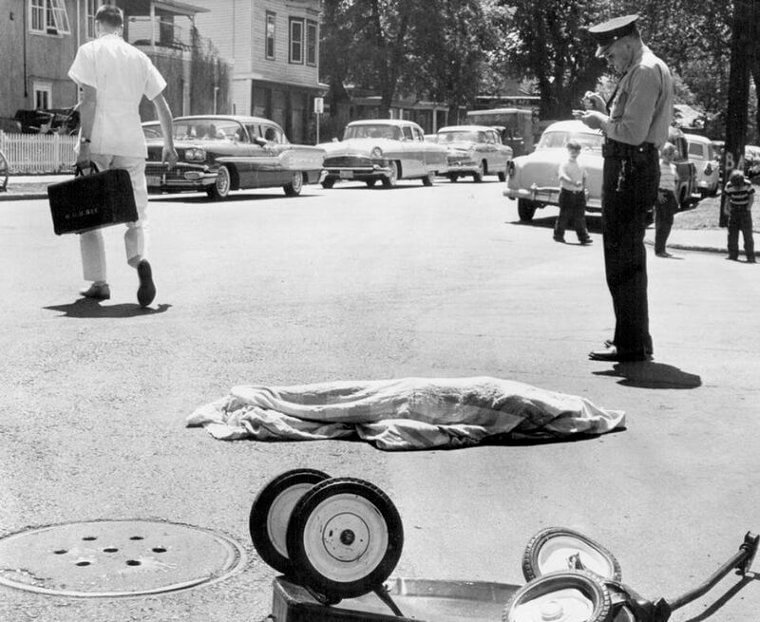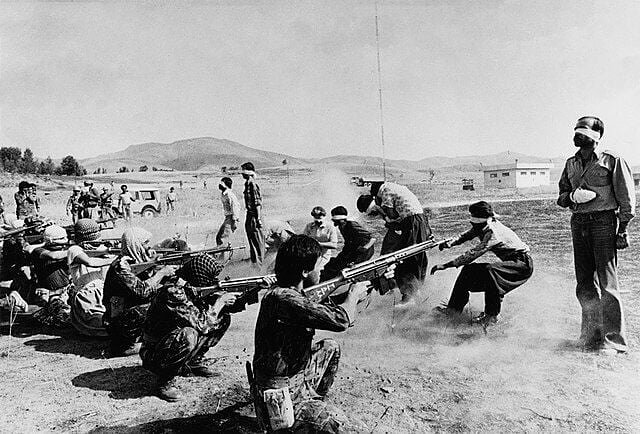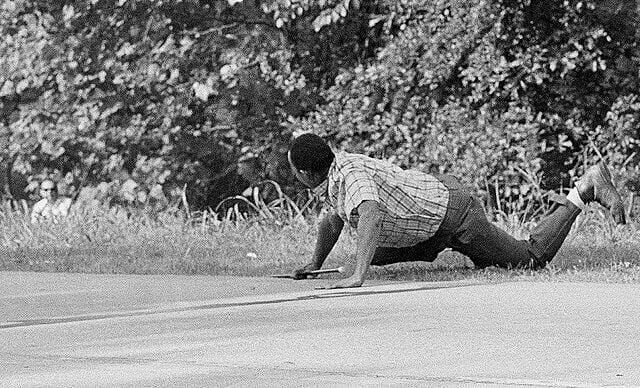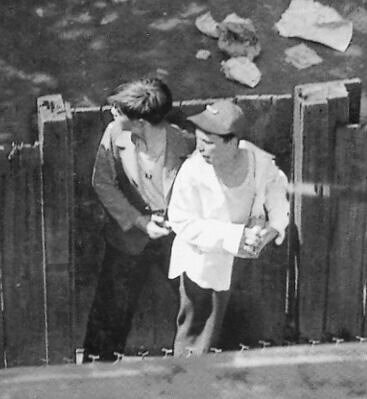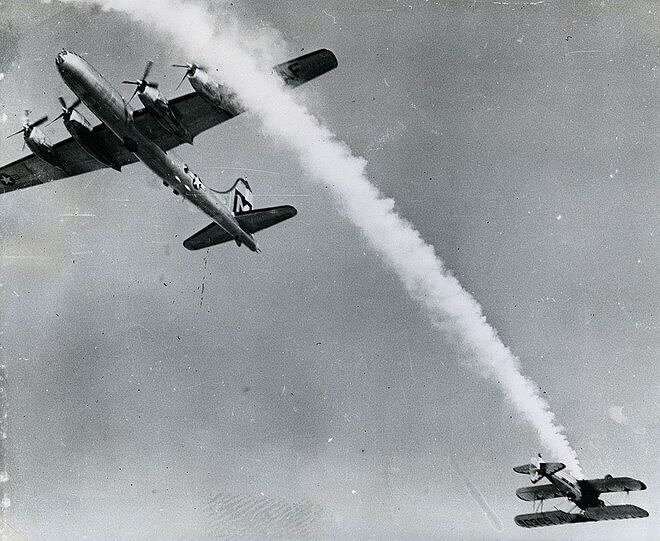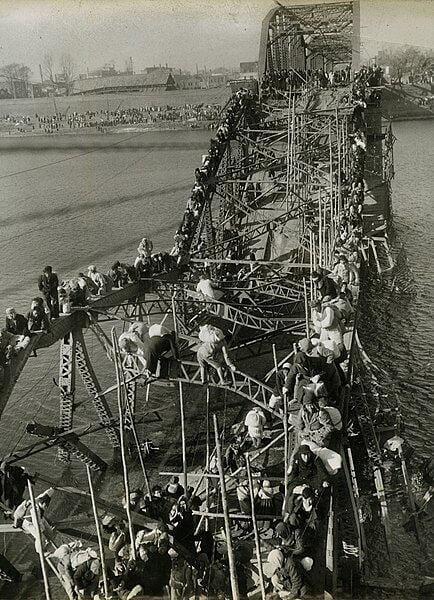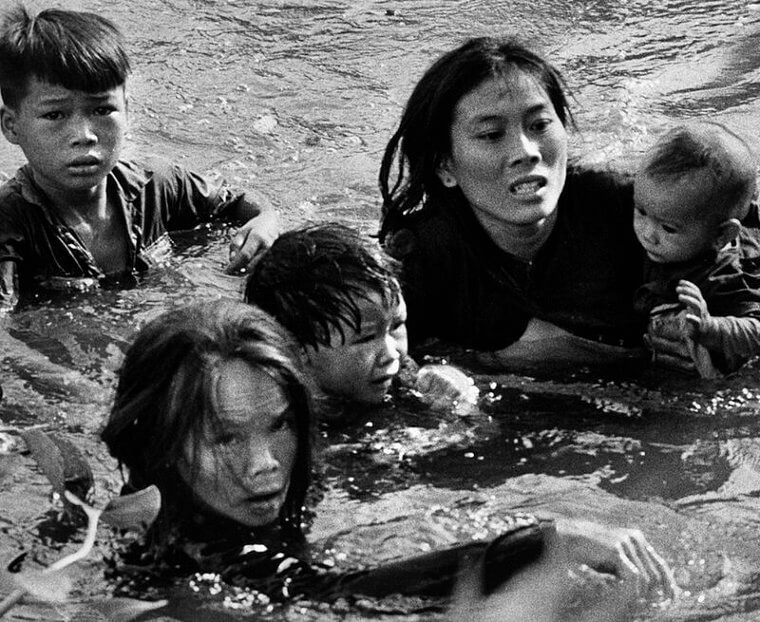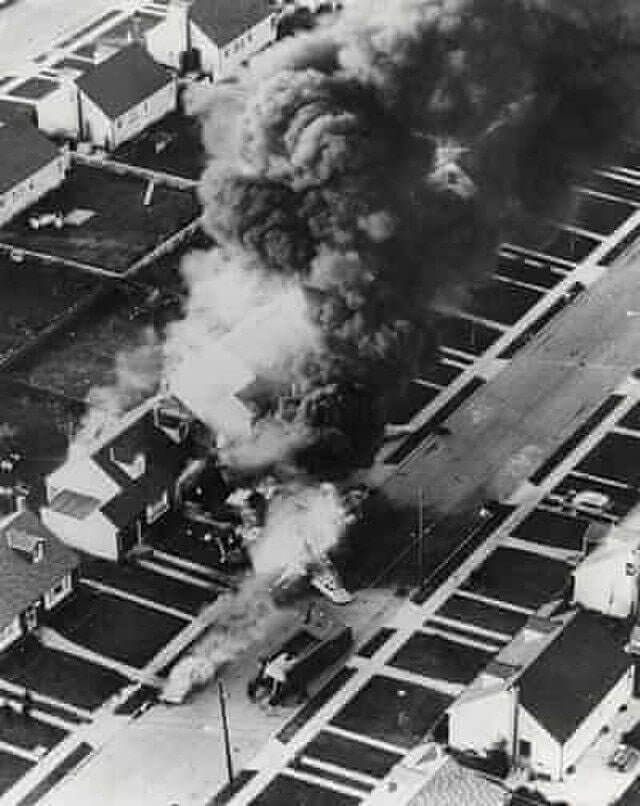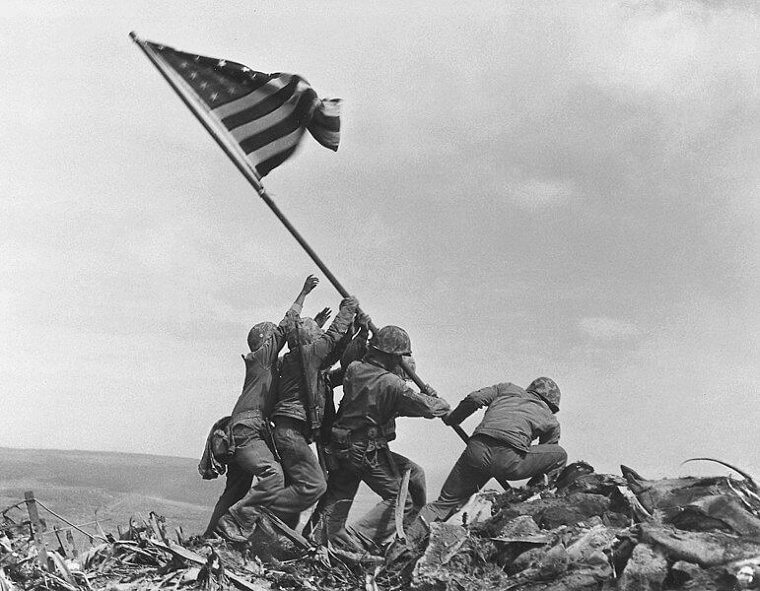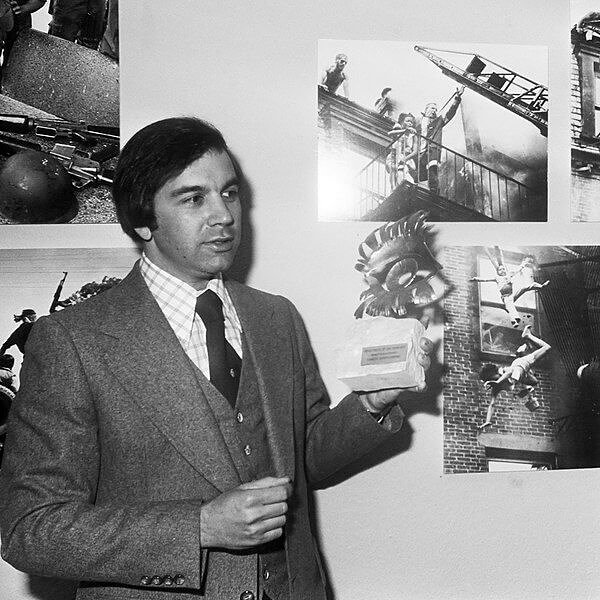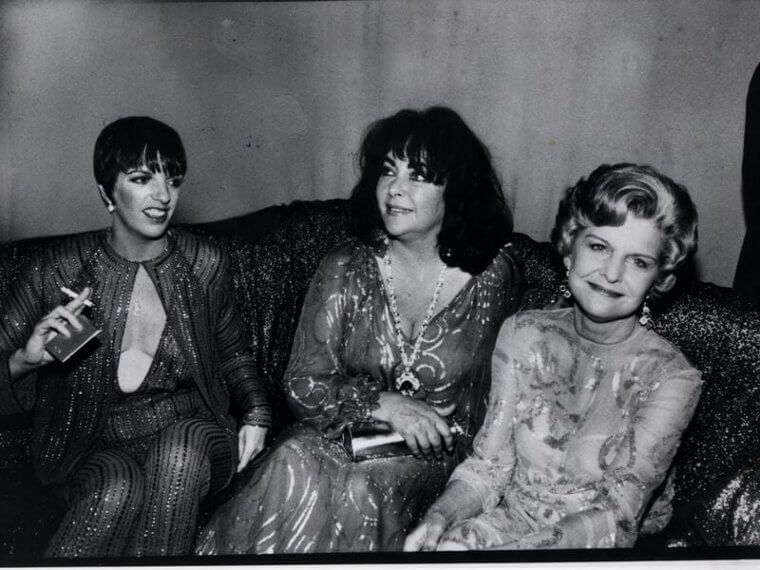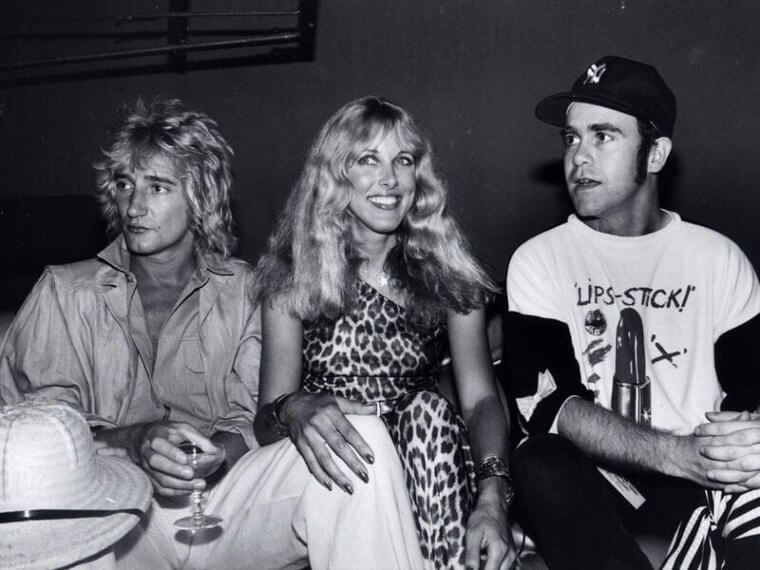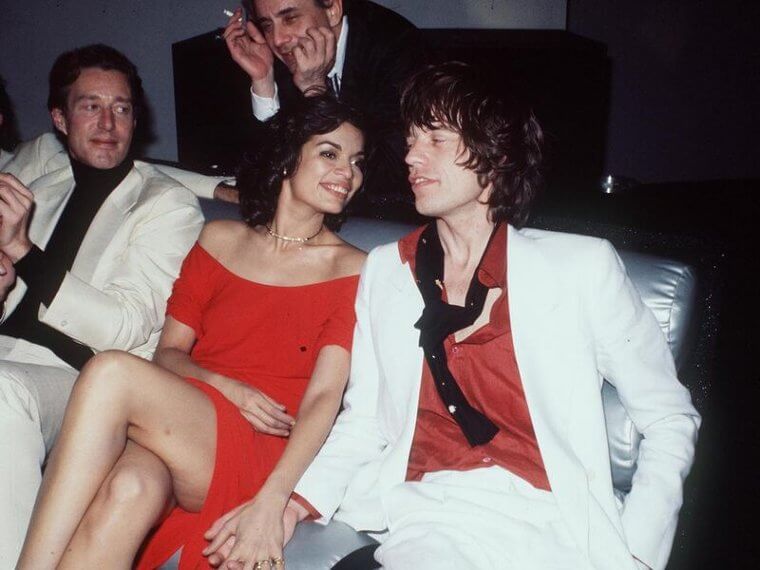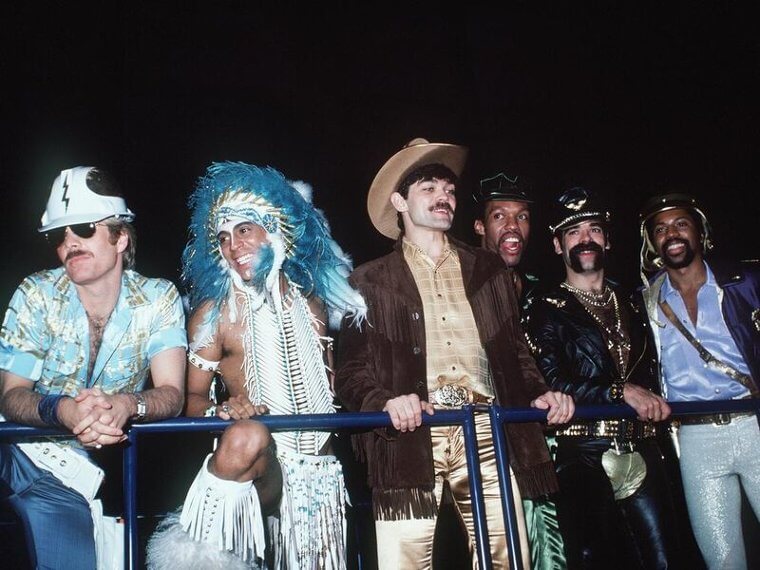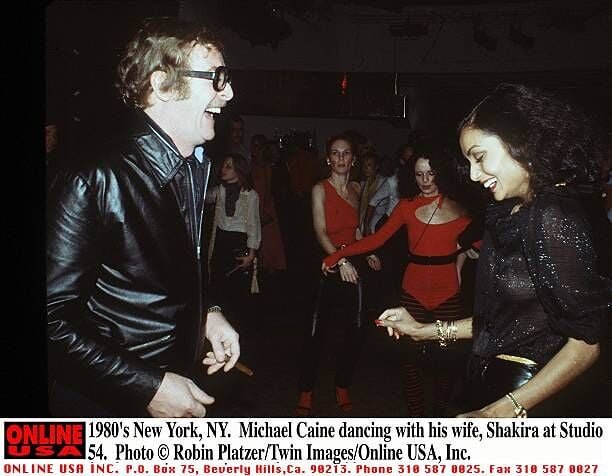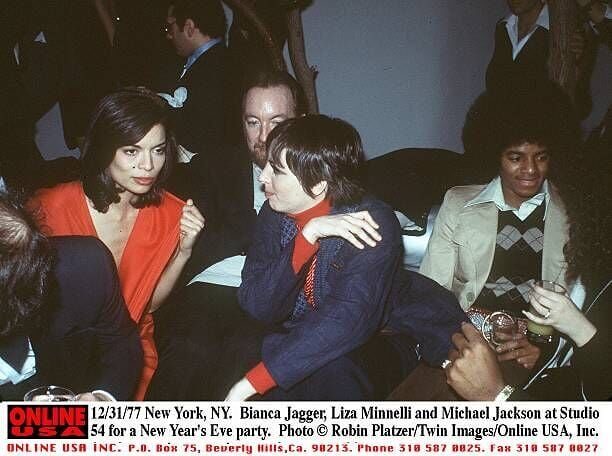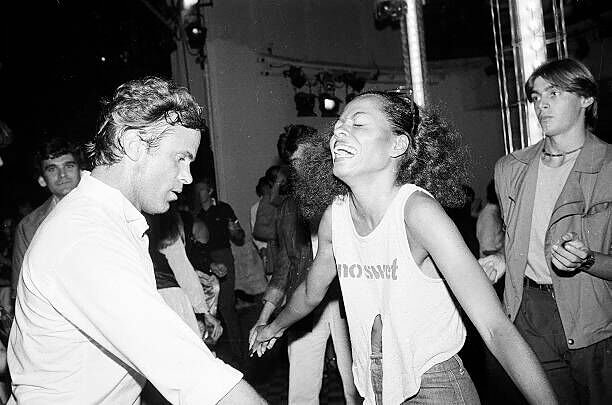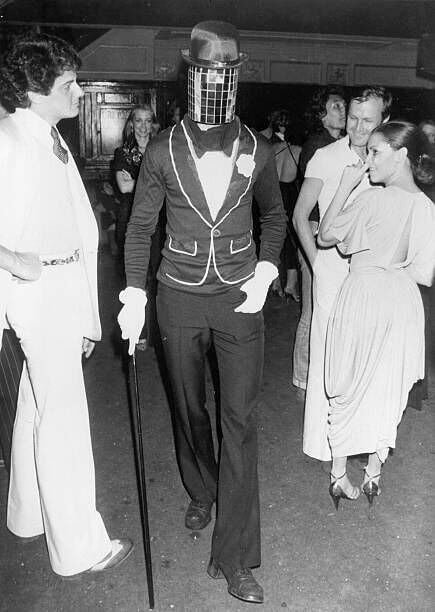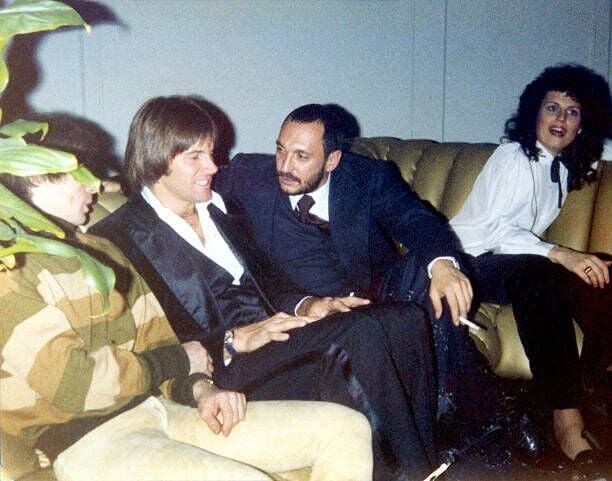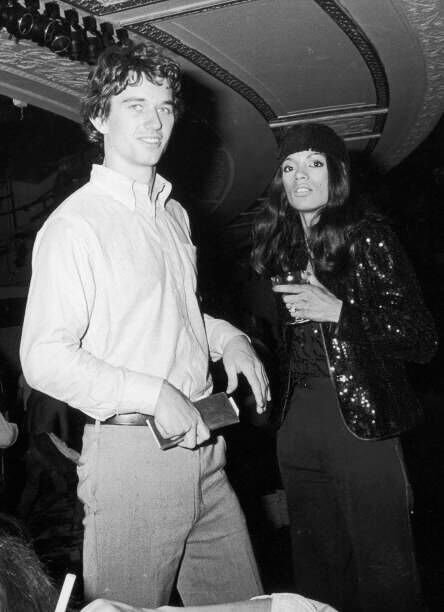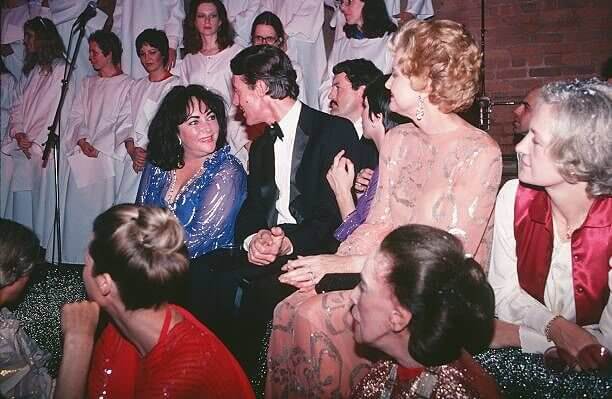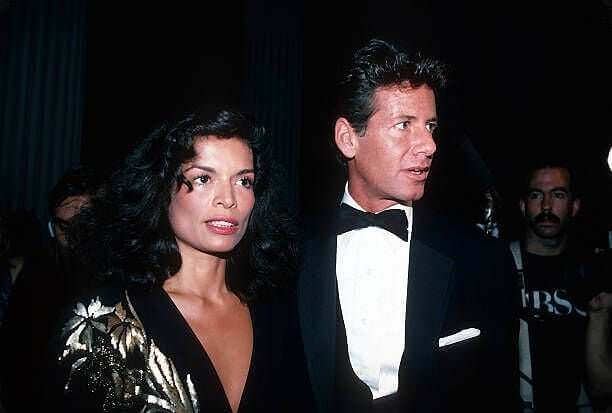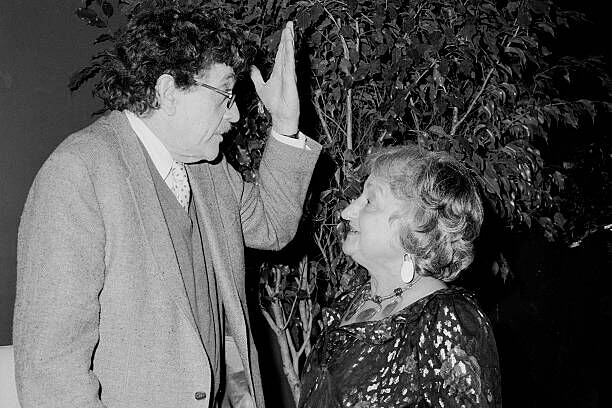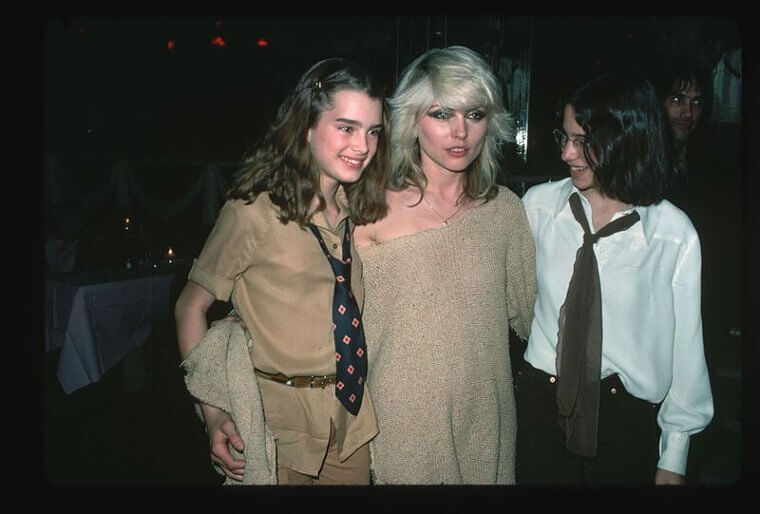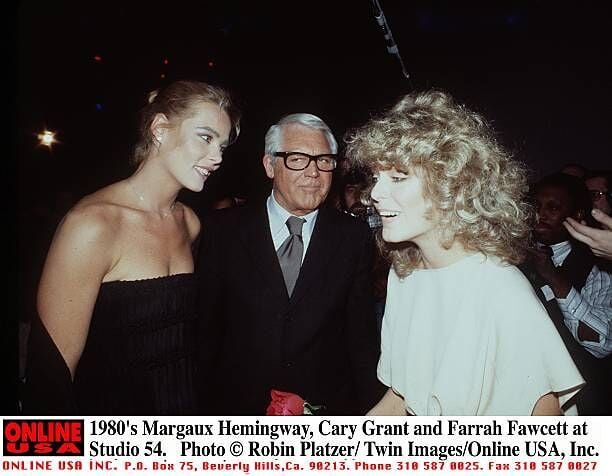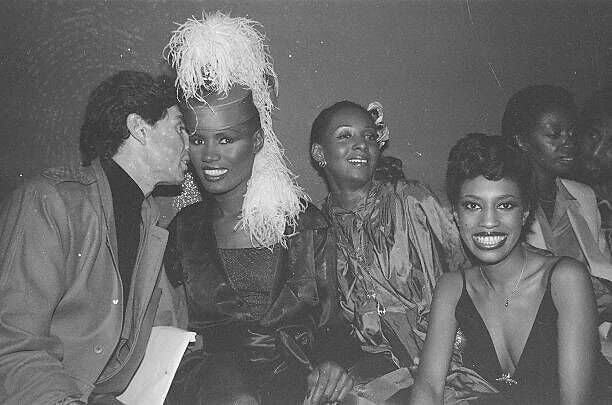Seeing people through a camera lens is a fascinating experience. While a photograph only gives a peek at a person’s story, the tales behind the images can tell us so much more. These outstanding photos have won Pulitzer Prizes for their capacity to elicit strong emotional responses, highlight critical historical events, and reveal previously unseen facts.
Truck Rescue on the Bridge
Virginia Schau was on a fishing trip with her family during the summer of 1953 when she witnessed an accident at Shasta Lake in California. The cab of a truck had slipped over the Pit River Bridge. She had a camera on her and immediately snapped the frightful moment.
Fortunately, the driver and his companion were pulled up to safety by motorists who were present on the side, including Schau’s husband. This experience and the heroic efforts of the rescuers were captured excellently in the image, and it was published in several magazines before winning the Pulitzer Prize in 1954.
Capturing a Young Couple's Grief
Evident in this photograph is the pain that accompanies the loss of a child. Parents are instantly ushered into a pit of guilt, blaming themselves for the disheartening misfortune. When this photo was captured on April 2, 1954, the McDonald family had just realized that their 19-month-old son Michael had drowned in the Hermosa Beach surf in California.
Appropriately tagged as "Tragedy by the Sea," this award-winning shot was taken by Los Angeles Times photographer John L. Grant, who had quickly rushed to the scene with his camera to immortalize the painful moment. Grant's submission was well-received by the Pulitzer Prize Board, and they concurred that "Tragedy by the Sea" was both tragic and unforgettable, awarding it the prize in 1955.
Captured at the Right Time
There are few events that have rocked the world like the assassination of President John F. Kennedy in Dallas in 1963. The subsequent execution of his assassin, Lee Harvey Oswald, was another jaw-dropper as it was captured on film. A photographer for the Dallas Times Herald, Robert Hill Jackson, had been in the basement of the Dallas police and court building, from where he wanted to cover the transport of Oswald to where he would be locked up.
Despite Jackson's vantage point being slightly obscured by someone, he managed to capture Oswald's shooting by nightclub owner Jack Ruby at the exact right moment. This picture would go on to be the tipping point of the nation and was awarded the Pulitzer Prize in 1964.
Capturing a Sinking Ship in Real Time
The Sinking of Andrea Doria is proof that even machines make mistakes. In July 1956, two watercraft collided despite radar's predictions of a safe voyage through a fog. Of both ships, the Italian sea liner Andrea Doria received most of the damage, including a staggering 40-foot hole in its hull.
Henry Trask was there the next day to witness the final moments before the ship sank. The Boston Traveler cameraman was so determined to take a photo of this collapsing ship that he hovered over the Andrea on a small plane, taking a series of 16 shots just nine minutes before the ship sank that would produce this Pulitzer-winning masterpiece from 1957.
The Soldier Immortalized Before His Passing
The Cuban Revolution from 1953 to 1959 was a coup championed by Fidel Castro against the authoritarian government of Fulgencio Batista. Following the successful revolt came the execution of thousands of Batista's soldiers, including Jose Rodriguez, whose final moments have been captured in this photograph.
While Rodriguez was being prepared for his end by a priest granting him the last sacraments, United Press International photographer Andrew Lopez observed the event with despair. Not only would capturing the tragic moment win him the Pulitzer Prize in 1960, but it would also give Rodriquez a chance at immortality. "Last Rites of Jose Rodriquez" is indeed a testament to the power of photography to preserve life.
The Speech That Became a Chaotic Event
Mainichi Shimbun newspaper photographer Yasushi Nagao was once on an assignment in a jam-packed lecture hall in Tokyo. The audience expected a political address, nothing more. Yet, everything changed in the blink of an eye, and Nagao had no idea what was ahead.
An outraged right-wing student, Otoya Yamaguchi, stormed the stage wielding a Samurai sword, which pierced Socialist Party Chairman Inejiro Asanuma’s stomach and heart as he began to speak. Some photographers in the room were obstructed from seeing the attack in full because of a podium, but Nagao got the best view. Asanuma’s shock and Yamaguchi’s furious facial expressions are seen in Nagao’s picture during the stabbing. It’s truly a once-in-a-lifetime snapshot that deserves recognition and got it in 1961 with the awarding of the Pulitzer Prize.
Captured the Moment Before the Ambulance
“The Kiss of Life” received recognition after the Pultizer Prize for Photography was split into spot news photography and feature photography in 1968.
On one of photographer Rocco Morabito’s drives in Jacksonville, Florida, he caught sight of an electric company lineman who had been electrocuted and was clearly dangling from the pole. Rocco quickly captured the moment before calling an ambulance. The unconscious man was soon rescued as another lineman climbed to give him mouth-to-mouth resuscitation. This was when Rocco got the shot that won him the prize for spot news.
Daylight Execution at Saigon
In February 1968, Nguyen Ngoc Loan, the national police commander of South Vietnam, murdered Nguyen Van Lem. He executed the man in front of everyone, and Associated Press photographer Eddie Adams arrived just in time to film it.
In February 1968, Nguyen Ngoc Loan, the national police commander of South Vietnam, murdered Nguyen Van Lem. He executed the man in front of everyone, and Associated Press photographer Eddie Adams arrived just in time to film it.
Leap of Faith From a Blazing Hotel
Here is an image that'll make anyone anxious. With the building aflame, did the woman make it alive? The answer is yes, but what makes this photo even more interesting is the photographer, who made history by becoming the first amateur to win a Pulitzer Prize.
26-year-old Arnold Hardy was out having a good time with his friends when he came upon the fire-engulfed Winecoff Hotel that had no means of escape but for the guests to jump off the high floors. With only one flashbulb left of the five he had set out with, the young man aimed his camera at the woman to capture her free fall, and for his efforts won the prize in 1947.
Beall’s "Faith and Confidence"
When two-year-old Allen Weaver gazed up at police officer Maurice Cullinane at a Chinatown procession, he certainly had no idea that his actions would be adored by millions for decades to come. The inquisitive little boy was stopped by this friendly officer from scampering into the main event and hurting himself. What others probably overlooked as an officer doing his job was commemorated by Washington Daily News photographer William C. Beall as a symbol of childhood innocence.
Beall’s photo stood out amidst other Pulitzer Prize submissions and was instantly selected by the jury. Even readers of the Washington paper in 1957 were amazed by the picture - not just for its outstanding appearance, but for the endearing message it possesses.
Homecoming of a Distinguished World War II Soldier
World War II was at the halfway mark in 1943 for the US, and one of its many soldiers, Lt. Col. Robert Moore, returned home after being in the thick of war for 16 months. He had successfully led his battalion against the Panzers in North Africa and was awarded the Distinguished Service Cross for his bravery.
Earle Bunker with Omaha World-Herald had patiently waited for over a day at the station for Robert's train to arrive so he could capture the heartwarming image of an American soldier's happy reunion with his sobbing wife and seven-year-old daughter. In the picture, his face isn't shown as an ode to every war hero returning home.
Free the Nipple!
The scene could get rather wild inside Studio 54, and people weren’t afraid to let down their hair and shake their booty. Or rather, their boobies. Sonia Moskowitz captures an iconic moment as a reveler lifts their arms to the music and lets a nipple slip out of their blazer.
You’d think that with their extravagant accessorizing, including a net hat and gaudy necklace, this person would remember a bra. But perhaps they found the strapping restrictive, and by the looks of things, nobody else seems to mind!
Strength and Dignity in the Face of Grief
Following the assassination of Martin Luther King Jr., two funerals were held in honor of the Minister in Atlanta, and photographer Moneta Sleet Jr. was there to take pictures of the event for Ebony Magazine. Nevertheless, the most popular of the images was the picture of Coretta Scott King, King's widow, holding Bernice, her young daughter, on her lap.
In 1969, when the shot won the prize for feature photography, the Pultizer jury described the photograph as showing "the strength of the woman, the comforting of the child, and her dignity in the face of deep, personal grief." Sleet's award stands unique since the Pultizer Board did not have journalism awards for magazine content until sometime in 2016.
Their Protest Earned Him His Prize
The protest of a group of students in April 1969 of the Members of the Afro-American Society against prejudice and inequity at Cornell University in Ithaca was the event that won photographer Steve Starr his Pultizer Prize for spot/breaking news photography. Although the protest was peaceful, it was the first time campus protesters were openly armed.
Steve, on arrival, had met a student inside the Willard Straight Hall holding a rifle. For the next 34 hours, he actively reported on the story, an action the university public relations were against. Steve then took the prize-winning shot when the armed students were on their way out of the school, signaling an end to the standoff.
One-Shot Milton's Ford Strikers Riot
The Pulitzer-winning photograph from 1942 titled "Ford Strikers Riot" tells the story of Ford's first strike in the company's history. In 1941, an employee was fired, and in opposition, picketers parked themselves in front of the gates, inciting other employees to join their protest. A man, the one in the picture, against better judgment, tried to go inside to work and was mobbed and beaten up by the picketers.
At that exact moment, press photographer Milton E. Brooks from the Detroit News took out his camera and shot the picture that would earn him the prestigious prize. He was nicknamed "One-Shot" Milton because his camera was slow in capturing images, but his impeccable timing always gave him perfect pictures.
The Hidden Rolls Won the Prize
Controversial images may just be the perfect series to earn a photographer the Pultizer Prize, as was the case with photographer J. Ross Baughman. The journalist had reported the Rhodesian Bush War in 1977 for The Associated Press, where he captured delicate images.
Describing the set of pictures, the Pulitzer board said they depicted "one part of a nasty war - the plight of Black prisoners captured by the Rhodesian Army." The prize for feature photography would have slipped out of Baughman's fingers as the Rhodesian government confiscated much of his film. He had, however, been able to hide just three rolls. Aged 23 at the time of the award, Baughman stands as the youngest person ever to receive the prize.
Worth All the Hustle
There’s no stopping a photographer who’s determined to capture an accolade-worthy picture. Just as raging sea foam couldn’t stop Henry Trask from filming the sunken Doria, so also Paul Vathis wouldn’t permit security restrictions or physical discomfort to impede his chances of a great photo.
His Pulitzer Prize-winning "Serious Steps" is a snap of former US President Dwight E. Eisenhower and then-President John F. Kennedy in 1961 right after the failed Cuban Invasion which was largely funded by the US. Though the duo granted many pictures that day, this was the only one that truly grasped the gravity of the matter and the cordiality between both presidents. What’s even more interesting is that Vathis took this shot illegally!
Help Me, Father
When they say being a priest is a calling, they were not joking. Every day, the men of the cloth have to deal with many confessions and be impartial to whatever crosses their paths. The monastery is one thing, but when war breaks out, that's when the religious leaders' faith is tested.
Take this priest, for instance, who had to deal with protecting a wounded soldier during warfare in 1962 Venezuela in this image taken by Héctor Rondón. The image won the Pulitzer in 1963.
Parched Indian Sailor Begs for Water
One look at this image of a parched Indian sailor begging for water is enough to be haunted by the desolation of the picture forever. We cannot even imagine what it would have been like for photographer Frank Noel who experienced it firsthand. He was in Singapore during the 1942 Japanese attacks that led to thousands of men, women, and children trying to flee aboard a British vessel.
When the ship was attacked, the passengers, including Frank, used lifeboats to escape to neighboring islands. 270 miles from Sumatra, he encountered another lifeboat full of Indian sailors who begged them for drinking water, which they didn't have. Helpless, 'Pappy' Noel took out his camera and captured the heartbreaking moment.
Post-Battle Ravages of Tarawa Island
The gut-wrenching image of post-battle damages captured by Frank Filan depicts war's stark and unforgiving reality. An American soldier lying motionless surrounded by the devastation at Tarawa Island tells the tale of men and women who sacrifice their lives for their country.
As an Associated Press photographer, Frank covered the fierce battle in the Pacific Ocean for three years when he came upon this distressing sight on his third day on Tarawa Island. In the days prior, he had lost his equipment trying to save a man and had to borrow a camera to capture the shot that got him the Pulitzer a year later in 1944.
The Embarrassing Shoe Hole
A hole in a shoe is no extraordinary thing, right? It is if it's in the shoe of a presidential candidate, especially when on stage during a campaign event. Photographer Bill Gallagher, while covering a campaign event in Michigan, noticed a hole in Democratic presidential candidate Adlai Stevenson's shoe.
Gallagher took his shot in a very subtle way to avoid alerting competitors to the opportunity so as to maintain its exclusivity. He came near the stage, placed his camera on stage, and walked away with a priceless image. Although it didn't signify anything important, the picture became famous instantly and went on to win a Pulitzer Prize in 1953.
The End of the Road
In the '50s, road safety wasn't as strict as today. It was common to see kids running around on their makeshift cars and trolleys along the road. In the era's defense, the neighborhood was pretty safe back then. Even so, there was always the risk of tragedy when a distracted pedestrian met a careless driver.
This image taken by William Seaman showcases how grisly the encounters listed above might have ended. Unfortunately, the poor person met their untimely demise in an unlucky fashion, with their trusty trolley car getting bent out of shape. It's interesting how such a simple image can convey so much information and emotion.
The Tyrannical Incident From Iran
This picture was regarded as one of the most important photos to capture an international crisis. Titled "Firing Squad in Iran," the photograph shows the execution of 11 Kurdish militants after a quick trial in Sanandaj, Kurdistan.
This turned out to be the only picture ever awarded a Pulitzer Prize without a named photographer. The photograph was circulated with the photographer's identity kept secret to avoid any reprisal. More than two decades later, the world came to know him as Jahangir Razmi, a journalist from Iran. Once he was identified, the Pulitzer Board invited him to a ceremony to honor his work.
A Sad Day for Activists
When we get history lessons on civil activism, it's easy to think the whole process was a walk in the park. Unfortunately, words have a way of making even the most difficult of situations sound like a blip. Luckily, we are in an era when photography has been around and is thriving more than ever.
Thanks to the magic of photography, this sad moment when Civil Rights activist James Meredith was shot on the road has been immortalized (he survived the shooting). Jack R. Thornell is the photographer behind this image, and for his work, he won the Pulitzer in 1967.
A Teen Gunman Holding Another Teen Hostage
Photographer Frank Cushing of Boston Traveler was filming the images of domestic violence victims when he chanced upon two cops questioning 15-year-old Ed Bancroft about a robbery. Suddenly, the teenager pulled out a gun, shot one of the officers, and ran off into the nearby alley, taking another teen as a hostage.
Finding himself in the thick of live police action, he looked for a place to serve as his vantage point. He knocked on a door, and as predicted, the house's back porch gave him the perfect angle of Ed holding the teen at gunpoint, which is how Frank ended up taking a photo that won him a Pulitzer in 1948.
Near Miss Caught on Camera
Air shows are full of spectacular showcases of airplane theatrics that very few pilots, let alone people, can ever hope to achieve. To say these stunts are complicated and dangerous is an understatement. Every pilot is one wrong move or malfunction away from crossing the River Styx.
In 1950, Bill Crouch, a photographer for the Oakland Tribune, captured a near-miss incident that showcased the magnitude of these airshows. Two planes passed each other by a hair, leading to one of the most breathtaking moments of the day. The pilot in the smaller craft reacted quickly and flew upside down, thus preventing a fatality. In all fairness, the moment was heart-wrenching, but the picture is spectacular.
Refugees Crossing a Bridge During the Korean War
Among many of photographer Max Desfor’s pictures of the Korean War, the one which shows refugees crossing a broken bridge is especially remarkable and went on to win the Pulitzer Prize in 1951.
Desfor was covering the Korean War alongside American troops in 1950 and had a massive portfolio of pictures. These images showed the suffering and lives of war-torn victims, soldiers, and refugees. This particular one shows North Koreans crossing the freezing Taedong River by holding onto broken pillars and rails of a damaged bridge. The image truly captures the plight of the human condition during wartime.
The Team of Five
War is a risky business, and no one ever wants to get caught in it. That's why whenever a war breaks out, most people want to get away from the chaos as soon as possible. Unfortunately, this Vietnamese family was caught between a rock and a hard place in 1966, and the mother of four decided to take matters into her own hands.
The family was caught wading across the river to safety, and Kyoichi Sawada had his trusty camera nearby. We are hoping the team of five made it through safely and were able to rebuild their lives eventually. A follow-up story or report should be drafted to give us peace of mind.
A Clean Controlled Crash
Air travel is the safest form of transport in the world thanks to all the strict measures to ensure the system works correctly. Nevertheless, this is a human system. So, once in a while, people are treated to a rare sight of a wild disaster such as this one.
This image won the Pulitzer in 1956 and was granted to the staff of the New York Daily News (rather than one photographer) for consistently quality photography. In it, we can see the aftermath of when a B-26 aircraft crashed into a residential neighborhood.
Flag and Country
Some images go beyond photography prizes to become a part of popular culture. This image is certainly one of those.
Joe Rosenthal took this photo on February 23, 1945, atop Mt. Suribachi during the Battle of Iwo Jima. The image's composition rang true with the American people and has been used to depict the nation's fighting spirit. Despite being so popular, Joe never got much compensation for his work, but he was awarded and recognized posthumously.
When the Fire Escape Let Go
On the fateful day of 22nd July 1975, Stanley Forman from the Boston Herald American rushed to the scene of a fire-engulfed building to get a few good shots of what he thought would be a routine ladder rescue. In a matter of seconds, with smoke coming out of the windows and the people standing at the edge of the top floors waiting to be rescued, he knew it would be different.
Finding a right angle to aim his camera at the unfolding chaos, Stanley clicked right at the moment a woman and her kid tumbled down a collapsing fire escape. The shot won the photographer his first Pulitzer the following year.
Here’s What Was Really Happening at Studio 54 Every Night...
If you follow celebrity history or stay up to date on all of the hotspots within the world of the rich and famous, you’ll recognize the brazen logo printed on this frosted glass door. Launched at the height of the disco dancing era, Studio 54 has become famous around the world for a variety of controversial reasons.
Located on 54th Street in Midtown Manhattan in New York City, the Broadway theatre was a disco nightclub that opened its doors in 1927. Before long, it became a playground for celebrity guests and was notorious for restrictive entry policies, often based on the guests' appearance and style. Inside, the club was even seedier, with widespread drug use and careless sexual activity, especially on the balcony and inside the basement VIP rooms.
Care for a glimpse inside? Stay with us as we share some saucy pictures from within.
Take a Picture. It’ll Last Longer
Did your parents raise you to keep your feet off of the table? Well, there are no rules in Studio 54, and you can put your feet where you want to. In the late '70s, photographer Sonia Moskowitz snapped this picture in the lounge area of Studio 54, and it perfectly encapsulates the mood of the era.
Located on 54th Street in Midtown Manhattan in New York City, the Broadway theatre was a disco nightclub that opened its doors in 1927. Before long, it became a playground for celebrity guests and was notorious for restrictive entry policies, often based on the guests' appearance and style. Inside, the club was even seedier, with widespread drug use and careless sexual activity, especially on the balcony and inside the basement VIP rooms.
Care for a glimpse inside? Stay with us as we share some saucy pictures from within.
Take a Picture. It’ll Last Longer
Did your parents raise you to keep your feet off of the table? Well, there are no rules in Studio 54, and you can put your feet where you want to. In the late '70s, photographer Sonia Moskowitz snapped this picture in the lounge area of Studio 54, and it perfectly encapsulates the mood of the era.
As you can see, any style was acceptable, as long as you owned it. These guests are wearing a range of outfits, from flirtatious sheer stockings and a formal suit to a colorful dress and shiny leather pants. It’s a nice touch if your underwear matches your dress, too!
Refined Ladies Dabble in a Scandalous Setting
Studio 54 welcomed some prestigious guests over the years, and that includes the likes of Liza Minnelli and the former First Lady Betty Ford. The esteemed women were dressed to the nines and enjoying a relaxing moment when photographer Robin Platzer sauntered up and caught them unawares.
Sitting with a third guest, the women look elegant and graceful, with a touch of pizazz. While the rest of the club raises the roof, Liza Minnelli and Betty Ford seem well behaved - albeit ready for some fun.
Three’s a Crowd
Today, Elton John is filled out and suited up, while Rod Stewart has transformed into a silver fox. But overall, the appearances of both men look very similar to their younger years, and you can recognize them in a flash!
Rod Stewart sits with his then-wife, Alana Stewart, and a much younger version of Elton John. Looking trendy as ever, the raspy singer seems slightly aloof, while his wife seems preoccupied with a very cool Elton John. It’s quite alarming to see such iconic singers in their younger years - and at Studio 54, no less.
A Special Birthday Party at Studio 54
If you’re a fashion aficionado, you’ll recognize Halston sitting on the couch, delicately balancing a cigarette in his fingers. While the fashion designer’s name blew up further when Netflix released a television show in 2021 titled Halston, this picture was taken by Robin Platzer, long before the era of streaming television shows.
In this photograph, Halston sits with iconic Rolling Stones singer Mick Jagger and his then-wife, Bianca. The group was celebrating Bianca’s birthday, and by the looks of things, there was a dress code as everyone is matching.
The Village People Make Their Presence Known
Led by Victor Wilis, the Village People found fame as an American disco group loved and known for their outrageous on-stage costumes (and provocative lyrics). Yet as this picture shows, their costumes were not only reserved for performances but also for parties.
The group looks ready for some fun, leaning against the railing and deciding where to go first. Should they hit the bar? Is that a beautiful woman on the dance floor? Or is it time for a cigarette break? If we had to put our money on it, we’d suggest that they started a flash mob for their song "YMCA"!
Couples That Dance Together, Stay Together
Sir Michael Caine CBE is arguably one of the best actors to emerge from the United Kingdom. As of 2022, he’s enjoyed more than 89 years of life, and he’s lived them to the fullest - including spending time at Studio 54 with his wife, Shakira Caine.
The couple, who are still married today, were getting their boogie on when Robin Platzer captured this fun-loving moment of the pair. Their joy seems palpable, and we can only imagine that their playful nature has contributed to their successful marriage of more than five decades!
Lize Minnelli Keeps Versatile Company
In one moment, Lize Minnelli is sitting pretty with the former First Lady Betty Ford, and in the next, she’s hanging easy with Michael Jackson (pre-surgery). In this particular picture, which was also snapped by resident photographer Robin Platzer, the group was warming up to celebrate the New Year at the end of 1977.
The scene looks relaxed and comfortable, with guests dressed warm and smart. We can only imagine the number of fascinating conversations that they had on that chilly evening, without a clue about what was to come in the following year…
Diana Ross Proves That She’s the Dancing Queen
Diana Ross is one of the most iconic entertainers from the 1970s, and judging by this picture, she was in her element while dancing at Studio 54. The smile on her face is contagious, and we can feel the music through her posture.
What song is the legendary diva dancing to, if you had to guess? Our money is on a loud, sing-along track that has the opportunity to play a little bit of air guitar - at least that's what the guy in the background is implying!
Better to Keep Identity Under Wraps
While many celebrities were bold and brazen about attending Studio 54, others were more concerned about the media’s rumors. At least, what we’re imagining is happening with this guest who has arrived wearing a mirror mask.
The mystery visitor arrived at the notorious venue in February 1979 with his identity carefully hidden behind an extravagant mask. Other guests were equally intrigued by the gent’s strange getup, but every time they stared at the mask, they would see their own reflection staring back!
An Award-Winning Song Brings Interesting People Together
In 1979, They’re Playing Our Song hit the airwaves and became a major hit. Studio 54 hosted a party to celebrate the opening night for the track, and it attracted quite an interesting crowd. If this photograph tells us anything, it’s that the club scene blurs the boundaries between social groups and leads to everyone becoming friends.
For example, famous ballet dancer Rudolf Nureyev sits alongside fellow dancer Michael Bennett and retired Olympian Bruce Jenner. Added to the interesting mix is Her’s Lucy actress Lucie Arnaz. We’d pay big bucks to be a fly on the wall of that conversation!
Robert Kennedy Junior Isn’t Camera Shy
You never knew who you would bump into when sauntering into Studio 54 during the 1970s. Depending on the night or the event, you could even cross paths with one of the preppy socialite Kennedy boys.
Robert Kennedy Jr. was enjoying a night out with his fiancee, model Jules Dreyfus, when the camera came by their way. Instead of shying away or asking for their privacy, the pair looked directly at the lens, allowing the photographer to capture a timeless moment. We have to admit, the pair do look gorgeous together!
A Candid Moment Captures High-Profile Guests
It wasn’t always sex, drugs, and rock ‘n roll inside the walls of Studio 54. Sometimes, there was a choir of people dressed in floor-length white robes. Judging by the dazzling outfits worn by these guests, the event was a class act - and we wouldn’t expect anything less from these individuals.
Sonia Moskowitz freezes a classic moment with Elizabeth Taylor, Halston, Betty Ford, and Martha Graham at Studio 54 in 1979. The only detail missing from this crisp and expressive picture is a hint at the conversation!
Bianca Jagger Arrives Dressed to Impress
There’s no denying that Bianca Jagger can turn heads. But put her in a gorgeous evening gown and touch her up with makeup, and she can cause people to trip over their own feet. We can only imagine how the atmosphere shifted when she arrived at Studio 54 with Calvin Klein on this particular evening.
In January 1980, the pair rocked up with looks to kill. While Bianca appeared ravishing in her attire, special mention must be made of Calvin Klein looking dapper in a bow tie and tuxedo!
Betty Friedan’s Animated 65th Birthday
When feminist author and social activist, Betty Friedan, approached her 65th birthday milestone, she decided to celebrate like there was no tomorrow - and Studio 54 was happy to oblige. Included on the guest list was American author Kurt Vonnegut.
Photographer Susan Wood was working the floor that night and captured this expressive moment between the two friends, with Kurt raising his hand while chatting with the birthday lady. We’d love to know the words behind this spirited conversation, but a black and white picture will have to do.
Steve Rubell Fratenizes With Guests
Can you imagine owning a club as prestigious as Studio 54? Well, Steve Rubell didn’t have to imagine because he really was the owner, and he took full advantage of the opportunity to socialize with high-rollers in between other owner responsibilities.
On this particular night, Robin Platzer captured Steve Rubell as he spent time with famous actress Farrah Fawcett and Ryan O’Neal. Judging by Farrah’s facial expression, it seems as though she’s ready to move on to the next conversation. At least Ryan O’Neal seems engaged!
Studio 54 Doesn’t Appear to Have an Age Limit
While Studio 54 was often the site of unsavory behavior, there were still instances when young guests would walk through the doors. Just look at this picture of Brooke Shields, who started her modeling career when she was only a child!
Also in the picture, captured by Lynn Goldsmith, is Debbie Harry, the singer from Blondie, and another young friend. We can’t be certain whether the ties around the youngsters' necks make them look older or as though they are ready for school - but obviously, no one asked them for their ID when they arrived!
Timeless Musicians Hit the Club
There are a few singers from the 70s and 80s that have stood the test of time, earning more and more fame as the years roll by. Rod Stewart and Tina Turner are two of them, and here they are pictured at Studio 54 together.
While both singers have aged since Robin Platzer took this photograph at Studio 54, there are a few details that have stayed the same. Such as Rod Stewart’s grand hairstyle and Tina Turner’s notable cheekbones! Of course, Rod Stewart’s ex-wife, Alana Stewart, also made an appearance.
A Face-Off Between Two Stars
At first glance, it seems as though American model Margaux Hemingway is engaging in casual conversation with actress Farrah Fawcett. However, a closer look at Cary Grant’s face in the background suggests that there may be a bit of tension.
Both women are megastars in their own fields, and they are probably not used to being outshone. While we can’t be certain of the words exchanged, we can only assume that Cary Grant is getting a front-row seat to a bit of drama.
Grace Jones Remains as Cool as a Cucumber
Born in Jamaica, Grace Jones found fame as a model, singer, and actress, growing well accustomed to the camera and posing. When Sonia Moskowitz swanned past to snap a picture of Grace Jones and her friends at Studio 54, someone (nearly) interrupted her smile.
Just as Grace turned to smile for the camera, her partner leaned in and either kissed her cheek or whispered sweet nothings in her ear. As a professional, Grace barely flinched, and the end result is a candid yet posed posted photograph.

